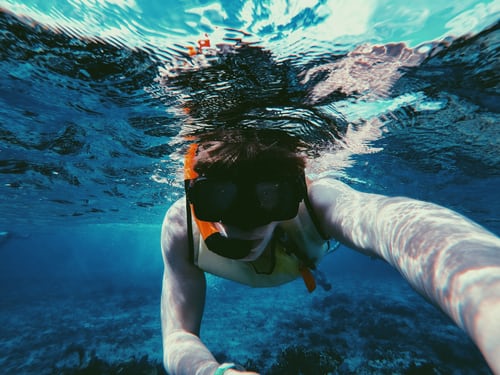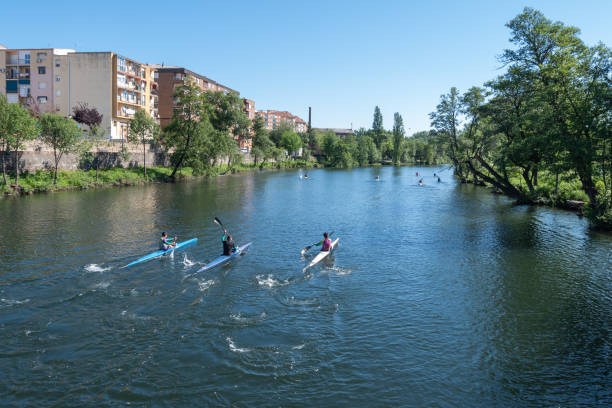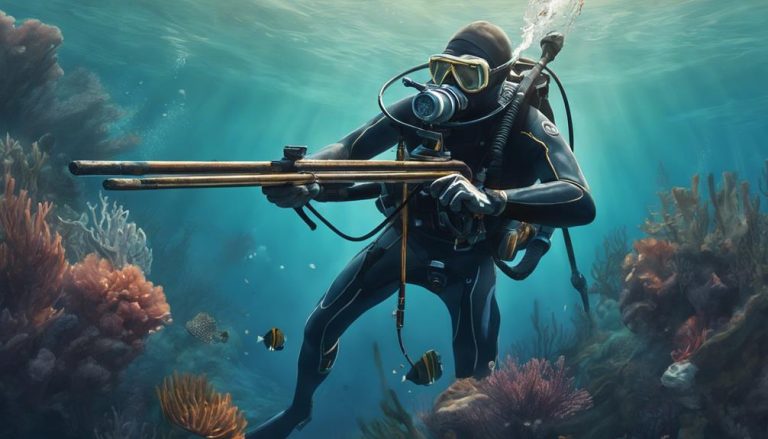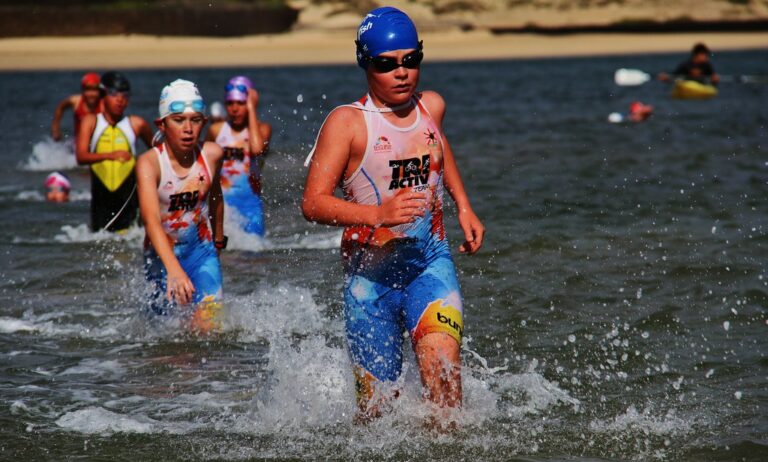General Rules of Canoe Slalom
Canoe slalom is a competitive sport that involves navigating a canoe or kayak through a course of gates while avoiding penalties. The gates are made up of poles suspended over the water and the objective is to pass through them in the fastest time possible while touching as few gates as possible. Canoe slalom has a long history dating back to the early 20th century.
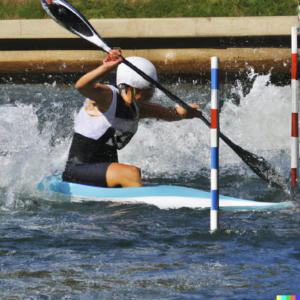
The sport originated in Switzerland in the 1920s, where it was called “Whitewater Slalom.” It was first demonstrated as a sport at the 1948 Olympic Games in London, but it wasn’t until the 1972 Games in Munich that it was officially included as a medal event.
Canoe slalom has been a part of the Summer Olympic Games since 1972, and it has also been included in the World Championships and the European Championships. The International Canoe Federation (ICF) is the governing body for the sport, and it is responsible for organizing international competitions and setting rules and regulations for the sport.
Over the years, canoe slalom has evolved and the equipment and techniques used by competitors have improved. The courses have also become more challenging, with more complex and technical features. Today, canoe slalom is a popular and exciting sport that attracts competitors and spectators from around the world.
Scoring in Canoe Slalom
In canoe slalom, a competitor’s score is based on the time it takes them to navigate through a course of downstream or upstream gates. Each gate consists of two poles suspended over the water, with the top of the gate being an overhead hoop. To score, a canoeist must pass through the gate by going under the hoop and between the poles, while touching neither the poles nor the hoop.
If a canoeist misses a gate or touches a gate, they are given a penalty. The time it takes the canoeist to complete the course, plus any penalties, is their final score. The competitor with the lowest score wins.
In international competition, there are typically two runs through the course for each competitor, and the scores from the two runs are combined to determine the final score. The competitor with the lowest combined score is the winner.
Common Terminologies in Canoe Slalom
Canoe slalom is a competitive sport in which paddlers navigate a decked canoe or kayak through a course of hanging gates on a river. Here are some common terminologies used in canoe slalom:
- Course: The route that the paddler must follow through the gates on the river.
- Gate: A suspended structure that the paddler must pass through on the course. There are two types of gates: upstream gates, which the paddler must pass through by going under the gate with their boat, and downstream gates, which the paddler must pass through by going over the top of the gate with their boat.
- Time: The amount of time it takes the paddler to complete the course. Penalties are added to the time for each gate the paddler misses or touches.
- Touch: When the paddler or their boat touches a gate or any part of the course other than the water. This results in a penalty added to their time.
- Missed gate: When the paddler fails to pass through a gate on the course. This also results in a penalty added to their time.
- Course inspection: The opportunity for paddlers to walk the course and examine the placement and orientation of the gates before their run.
- Run: A single attempt to navigate the course by a paddler.
- Head-to-head: A competition format in which two paddlers race each other on the course, with the fastest time winning.
- Penalty seconds: Time added to a paddler’s run for each gate they miss or touch.
- Final run: The last run of a competition, in which the paddlers with the fastest times compete to determine the overall winner.
Penalties
In canoe slalom, penalties are given for infractions of the rules that occur during a race. These infractions can include touching a gate with a hand or paddle, missing a gate entirely, or going the wrong way through a gate. Penalties are usually given in the form of time added to the racer’s final time. The severity of the penalty depends on the infraction. For example, missing a gate entirely is usually given a larger penalty than simply touching a gate with a hand. The specific rules and penalties for canoe slalom are set by the International Canoe Federation (ICF).
10 General Rules of Canoe Slalom
- The canoe must pass through each gate in the correct order, without touching the poles or gates.
- The canoe must pass through the gates with the bow (front) of the boat first.
- If a gate is missed or passed through in the wrong order, a 50-second penalty is added to the time.
- If a gate is touched or knocked down, a 2-second penalty is added to the time.
- The canoe must pass through the finish gate within the time limit set by the course.
- Only one person is allowed in the canoe at a time.
- The canoe must be propelled by a single-blade paddle.
- The canoe must be steered by the paddler using a rudder or by leaning the boat.
- The paddler must wear a personal flotation device at all times.
- The canoe must be inspected and approved by a course official before the start of the race.
Canoe slalom is a competitive sport in which paddlers navigate a canoe or kayak through a course of gates suspended over a river. The objective is to complete the course in the fastest time possible while touching as few gates as possible. Canoe slalom has been a part of the Summer Olympic Games since 1972 and is governed by the International Canoe Federation (ICF).
The sport has evolved over the years, with courses becoming more challenging and equipment and techniques improving. In competition, paddlers are scored based on the time it takes them to complete the course, with penalties added for touching or missing gates. Canoe slalom is a popular and exciting sport that attracts competitors and spectators from around the world.


